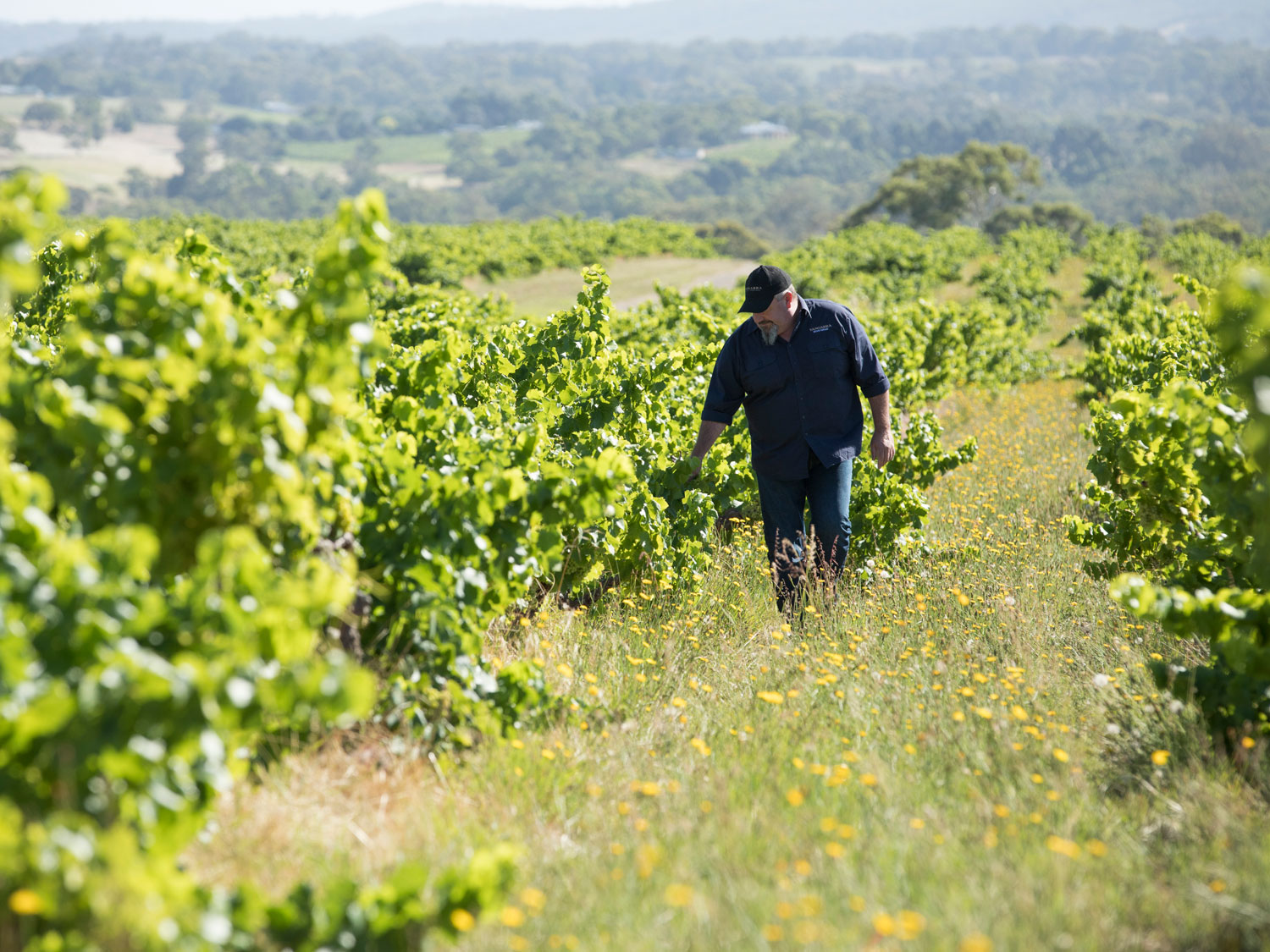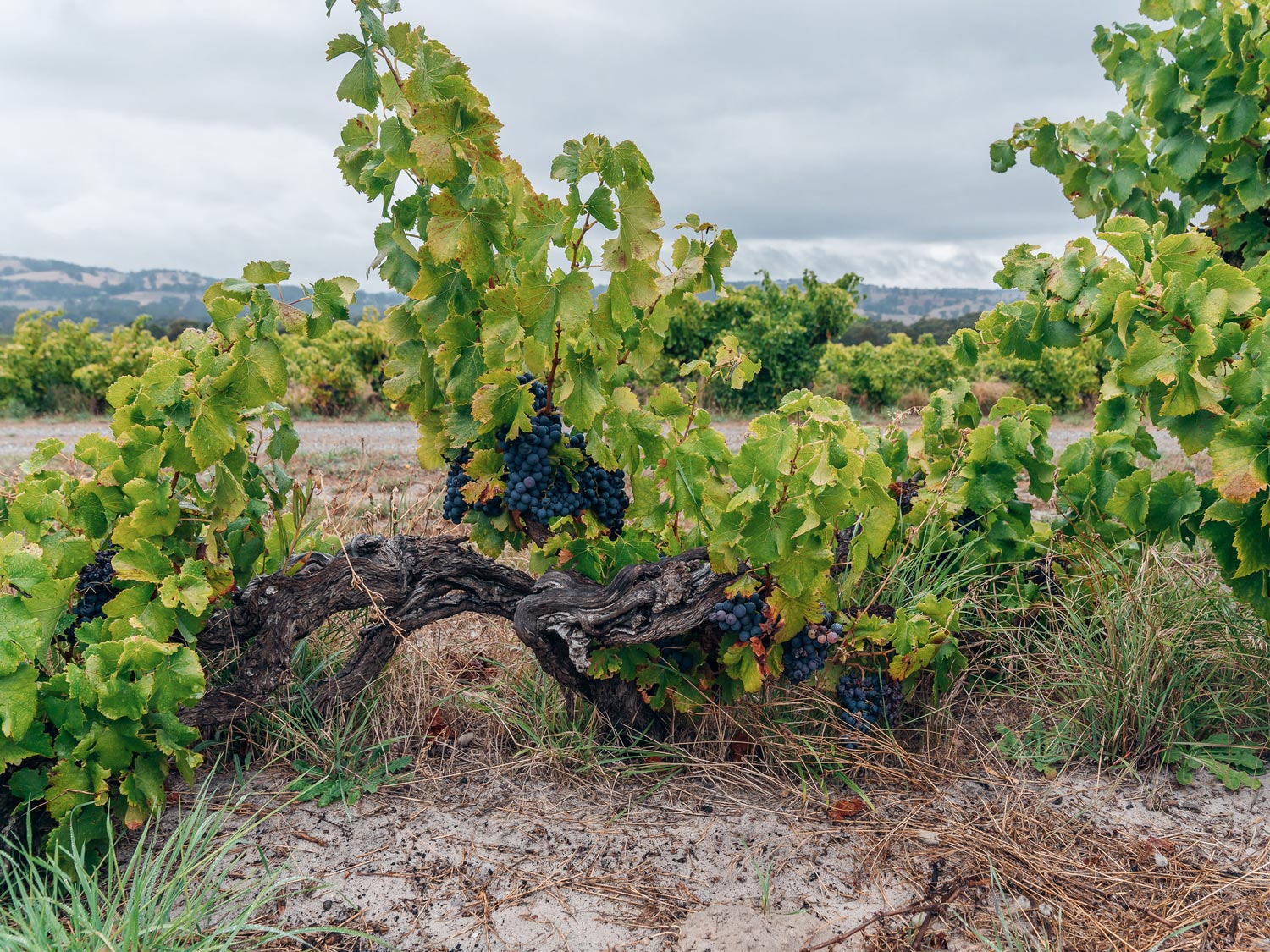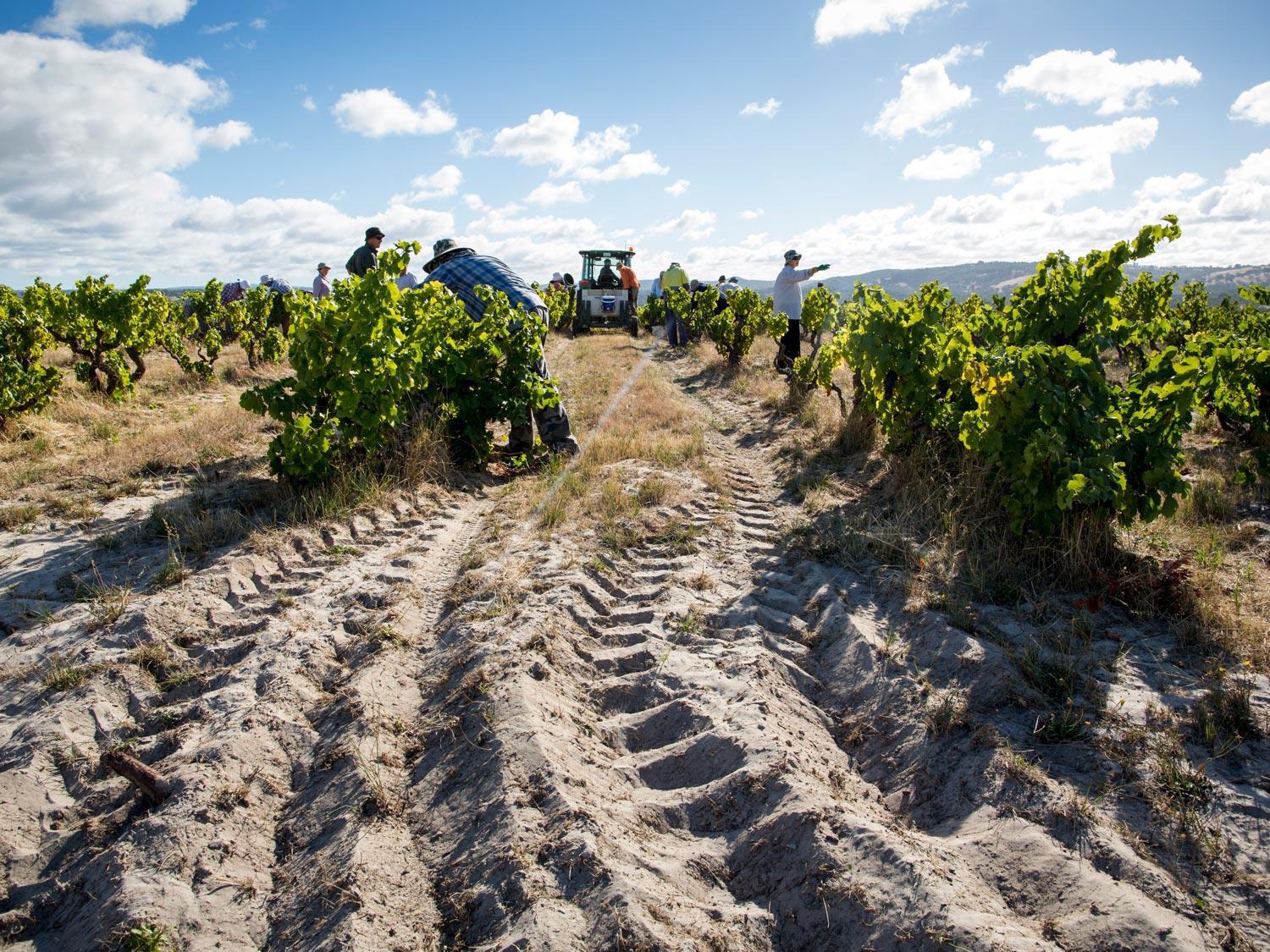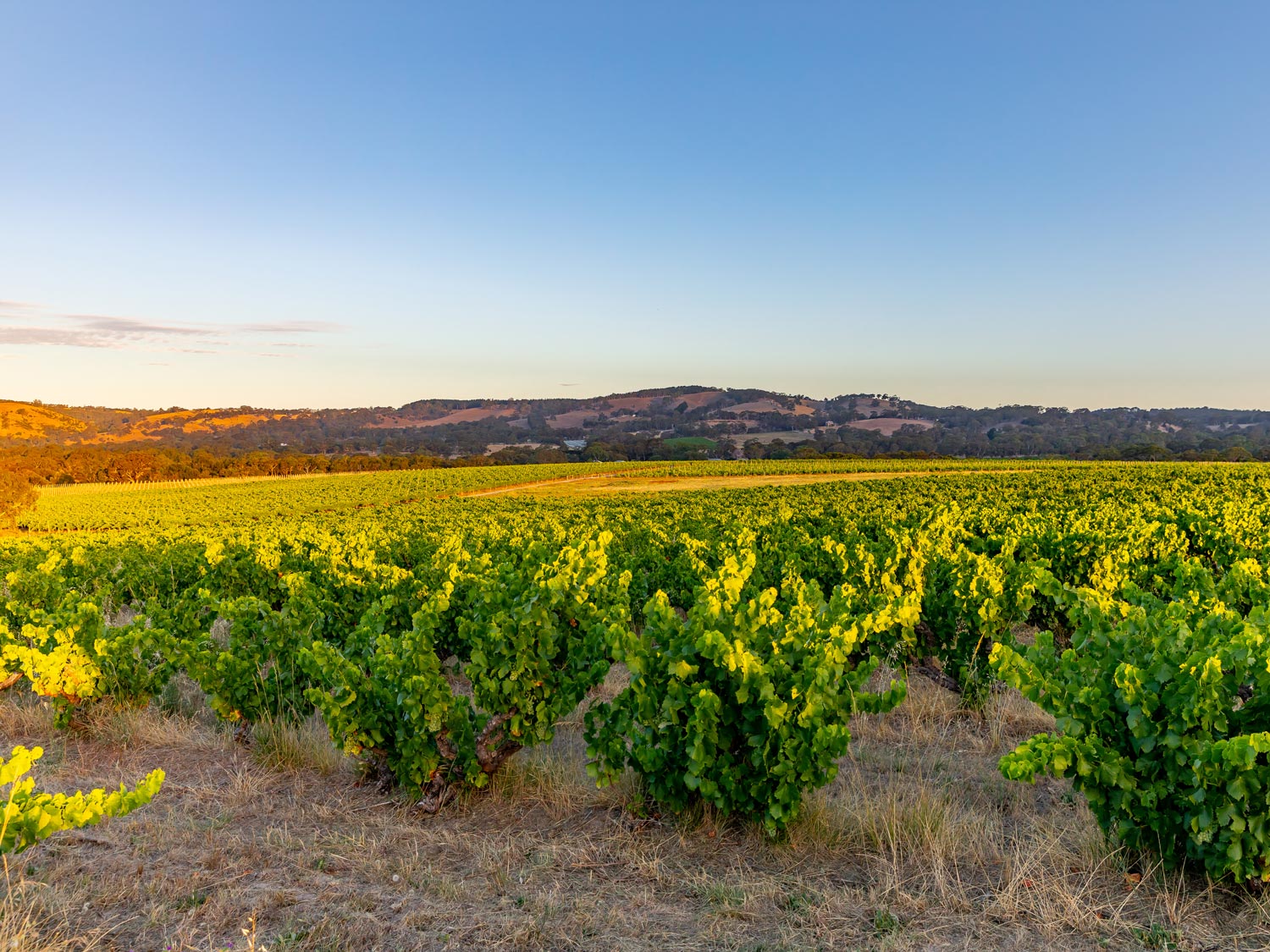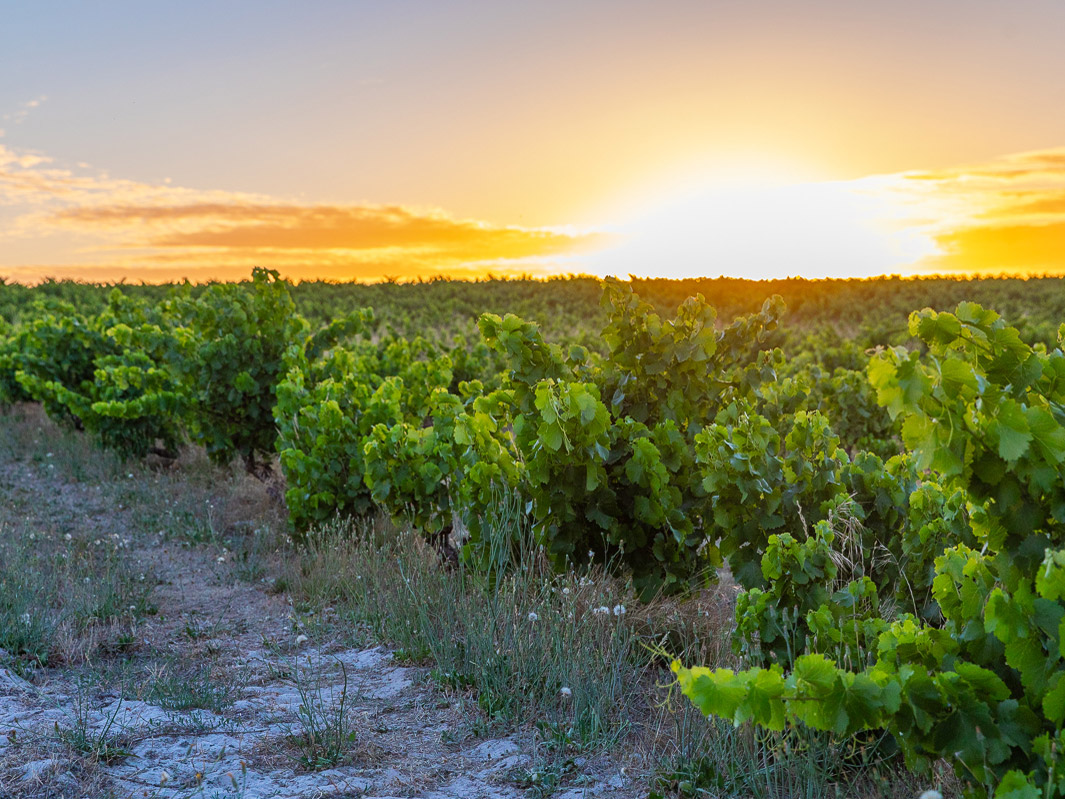The beating heart of the lauded Yangarra Estate Vineyard is the collection of bush vine grenache that was planted a year after the cessation of hostilities in World War II. That vineyard accounts for over a quarter of the old vine grenache in McLaren Vale. It’s not that long ago that this might have been seen as a liability, but with the grape’s star truly on the rise, it represents one of the most precious resources in the Vale. And that growing consumer appreciation for the grape has been heavily influenced by the wines made by Pete Fraser from fruit farmed by Michael Lane, with over a decade and a half of biodynamic management and deep focus on regenerative agriculture and sustainability. The High Sands Vineyard is a 1.7-hectare section on deep sands at the highest elevation, which produces exceptional and distinct fruit that goes to make Yangarra’s flagship ‘High Sands’ bottling.
“Looking back on the history of this vineyard, it’s interesting to imagine the old vine grenache being farmed with horses back in the day,” muses Lane. “This was planted as a block that would need little management, producing fruit destined for old-school fortified wines. We’re so grateful it wasn’t removed during the vine pull of the 80s, and grenache has now made a resurgence as a popular mainstream variety. It’s truly a living part of the heritage of the McLaren Vale region.”
Those first vines were planted in 1946 by Bernard Smart, assisting his father as a young man. Smart still lives adjacent to the property, farming with his son their own collection of grenache vines that his father planted in the 1920s. The vineyard passed through different hands before famed Californian vignerons the Jackson Family purchased the property in 2000.
Renaming the site Yangarra Estate, they took on 170 hectares of land, which included the 18.5-hectares of bush vine grenache along with other vines, while the remainder of the property was used for grazing. The site was extensively replanted to now occupy around 90 hectares of vines, while the non-vineyard land has been revegetated to encourage biodiversity.
“We have fenced off areas of remnant vegetation in the greater vineyard and are maintaining a full cover of sward to minimise erosion,” says Lane. “There is a great focus on maintaining the native corridors around the waterways and revegetation of native species in the areas surrounding the vineyard for biodiversity and sustainability.”
At the time of replanting, it would have been commercially sensible for the Jacksons to simply plant lots of shiraz, given its currency at the time – and still now – but the approach was much more considered. Naturally, shiraz was planted, but the approach was to find a climate-appropriate mix of varieties, and the High Sands Vineyard was used as a model.
“It’s well understood that Mediterranean varieties with heat tolerance are well suited to the McLaren Vale climate,” says Lane. “McLaren Vale wines are influenced by the unique ancient geology of the region and the proximity to the ocean. …We’ve explored extensive trials on other blocks with southern Rhône varieties based on the success of our grenache in the High Sands Vineyard.”
Those trials saw a slew of Rhône grapes, both red and white, planted, while Lane grew more and more focused on building a more resilient environment for them to grow in. That thought process saw him and winemaker (now general manager, too) Pete Fraser convince the Jacksons to pursue not just organics but biodynamics, converting the whole property in 2008 and attaining certification in 2012.
That’s an approach that Lane sees as vital to not just boosting soil health but also for preserving history. “Increasing microbial activity in the soil is very important to the sustainability of the High Sands site,” he says. “We are trialling straw mulching under vine, along with the continuation of our annual composting. …We are applying organic matter to build soil structure and increase soil microbiology in the deep sand. …Farming using organic and biodynamic practices concentrates our focus on the longevity of the site.”
The impact is also felt in the wines, with ripeness of flavour and tannin present at an earlier stage. “Our decision to pick the grenache at a lower Baume to emphasise fragrance has greatly influenced the wine style,” he says. “We’re focusing on phenolic ripeness, so that our grenache didn’t express candied, one-dimensional flavours. The picking window is very narrow for the site to achieve optimum ripeness.”
That’s a style that suits the site, too, given its deep sandy soils and location in the elevated northeast of McLaren Vale. “Blewitt Springs is becoming well renowned for its sandy soils and cooler sites that can produce fine, fragrant and elegant wines,” says Lane. “Along with the vine age on our High Sands site, the metre-deep sands have great influence on aromatics and tannin structure of the grenache.”
Lane notes that he works closely with Fraser to emphasise these elements, with a symbiotic relationship between grower and maker. “Pete and I work together closely, as we have for over 20 years, to produce the best fruit possible for our style of wine,” he says. “We’re doing a lot of bunch exposure early on to ensure phenolic ripeness at lower sugars. This translates into the glass with pretty, floral aromas contrasted by power of flavour and fine tannins.”
For anyone that has followed the arc of the Yangarra wines will attest to this, with an elegance creeping over the years but not at the expense of intensity, but rather revealing more detail. That has been enhanced by Fraser’s approach in the winery, selecting out a 1.7-hectare parcel from the highest vines with the deepest sand for the premium ‘High Sands’ bottling, while refining the ‘Ovitelli’ style from another select section of old vines, which sees no whole bunch but rests on skins for almost 6-months in ceramic eggs to make an earthy and fragrant wine. A third wine is made from the remaining 1946 plantings: the ‘Old Vine’ bottling, which includes whole berries and very gentle extraction to emphasise the fruit and site, with a mix of old oak, amphora and ceramic eggs employed for élevage.
Wines like these, with the emphasis taken off boldness, have helped to make grenache an emblematic variety of the Vale, but plantings lag seriously behind demand, accounting for only 6 per cent of the region’s vines. And the 18.51 hectares of old vines accounts for 26.3 per cent of old vine grenache in the region according to the McLaren Vale Old Vines Register.
That concentration of a scarce commodity only makes the quality of their custodianship an even more significant one. “The protection and sustainable vineyard management of our special site is integral to continue the legacy and appreciation of this important variety, for our vineyard’s future and for the region,” says Lane, who, even with that burden of responsibility, clearly would rather be nowhere else.
“I love that my role is as much a lifestyle as it is a job. I’ve been working on the vineyard at Yangarra for 24 years, and it’s so rewarding to be part of the amazing history of this iconic site. As much as it is challenging, the rewards outweigh that.”

